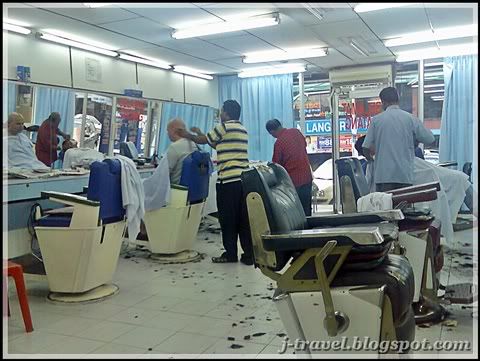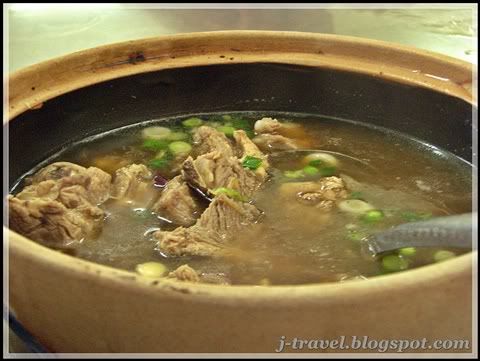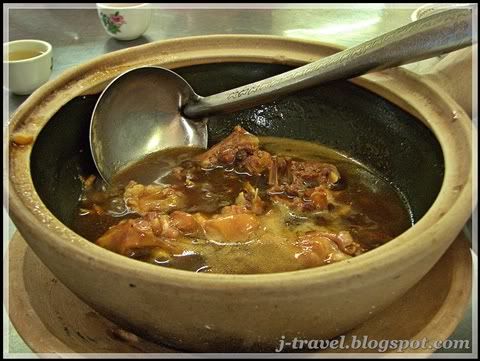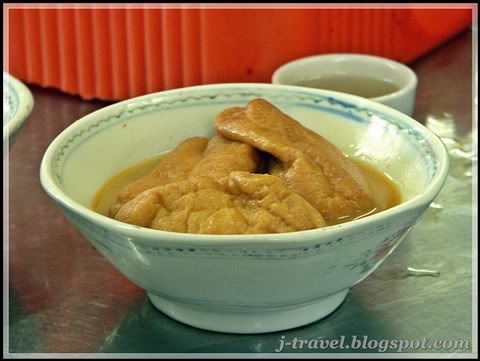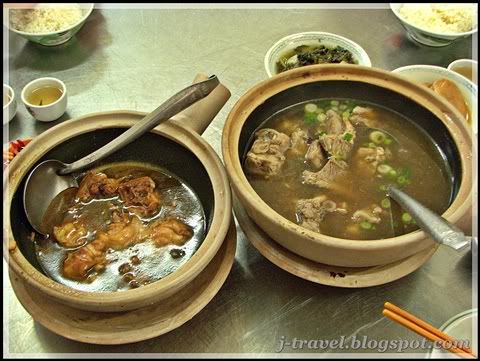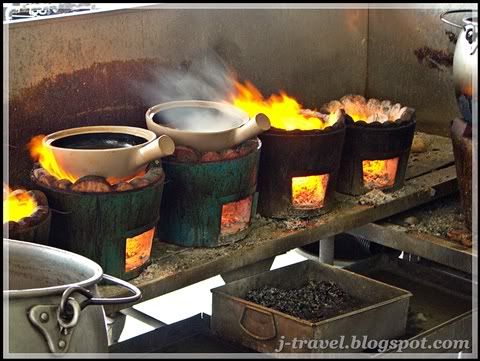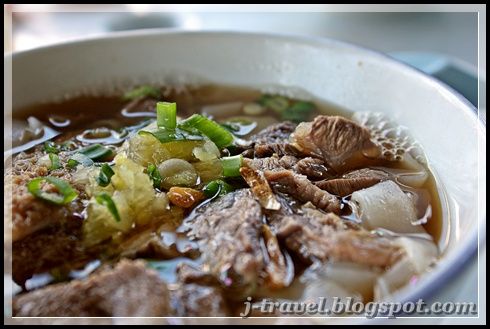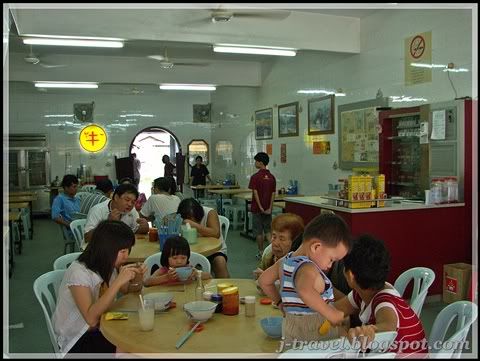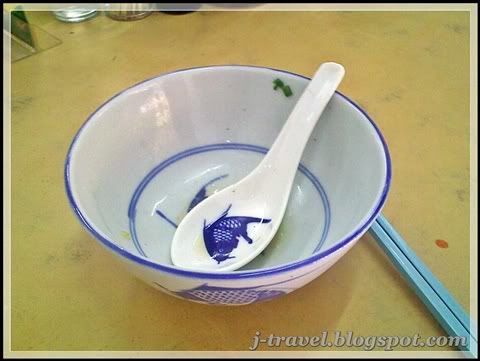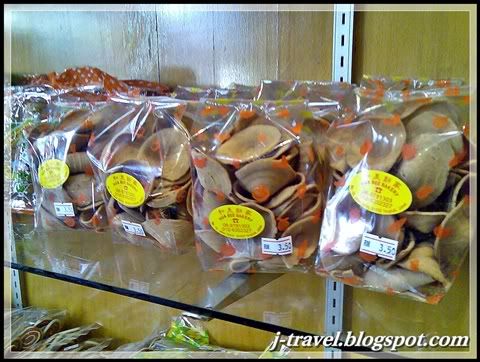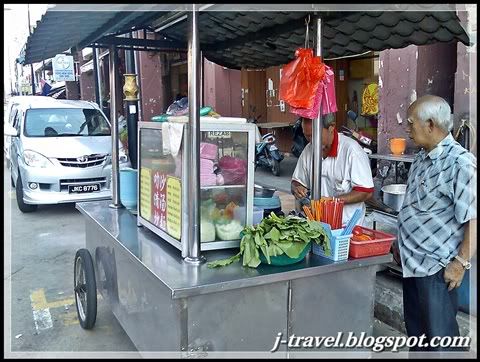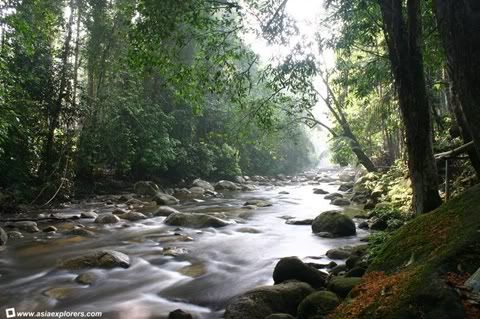Travel Tour to LebanonTourism culture and History travel tour in Lebanon Once considered the Paris of the East,
Lebanon has disappeared from the tourist map at the start of the civil war in 1975. At present, and gradually, is consolidating the view that not only is feasible to travel to
Lebanon, but also can be done without major complications.
Lebanon has many attractions within its modest borders: ancient cities, relics of the Roman Empire, luxurious ski resorts, great places and samples of Islamic architecture. Also has a complex culture, and this is their social and religious diversity, as the supporters of other nations' cultural homogeneity, it is impossible to avoid social instability. Unfortunately, in this case,
Lebanon has given the

reason.
The few foreigners who come to these lands today are in accordance with the profile of the wealthy tourists who hired a package tour. Although not many independent travelers, are welcome. The Lebanese are known for their genuine hospitality, and we invite strangers to their homes. For those interested in the history of this region and to witness how this country tries to overcome the crisis, it becomes the most appropriate time to visit.
best time to Lebanon travel For lovers of sun, summer, between June and mid September, is the ideal season to visit
Lebanon. During this period, the weather tends to stay warm and dry, with the exception of the coastal plain, where there is moisture. Surprisingly,
Lebanon is becoming an increasingly popular destination for lovers of winter sports (comes with several ski resorts). The season to play the sport runs from December to May. During the past month, the weather on the coast has reached sufficient levels of warmth for a dip, and the fields have already blossomed. Hopefully, we can take this season for skiing, sunbathing on the beach and to enjoy fresh flowers in the hotel room. Autumn also offers beautiful scenery in October and has referred the summer and hot flush is a good time to visit the nation
Lebanon Holidays and festival Most national holidays are religious, and with the variety of religious groups that coexist within the same borders, if there is any occasion to celebrate. The main Islamic holidays follow the lunar calendar of the Hegira, which has eleven days less than the West, so the holidays are ahead eleven days annually. Among the most important events include the Ras as-Sana (New Year's Day), the Achour, Public Mourning Day which are Muslims and Shiites commemorating the assassination of the grandson of Muhammad, and Radames, a month in which believers fast from dawn to dusk. The celebration ends with the great feast Eid al-Fitr. The day of the patron saint of the Maronites, Mar Maroun, is celebrated on February 9, and the Christian celebrations of Holy Week takes place twice: the first, according to the Gregorian calendar and the second, according to the schedule of eastern Christian churches. Among the secular holidays include Independence Day (November 22) and the Day of Qana (April 18), which recalls the massacre that occurred at Qana in 1996, where 107 Lebanese civilians were killed after the Israeli bombing of a camp of the UN. A more cheerful note is in the hands of the internationally famous Baalbek Festival of the Arts in July
places and attraction to travel in LebanonBeirut Formerly known as the Paris of the East,
Beirut was a strong punishment for the 16 years of war in
Lebanon. The city has not yet recovered, nor of the bombings, or the massive influx of refugees, therefore, many newcomers are shocked at the destruction, reconstruction, crowding and chaos exist. Located in the heart of the Mediterranean shores of
Lebanon,
Beirut reflects all kinds of contrasts: of buildings together with exquisite architecture grotesque mass of cement houses and gardens of fragrant jasmine survive, dwarfed in the shadow of modern buildings and old born winding alleys of broad avenues and modern ostentatious cars compete with trucks on the street vendors. Although not much remains to be seen, they are still vibrant and unique charm.
In the district of Hamra, in the northwest of the city, are banks, hotels, cafeterias and post office, this area lends itself to view windows and soak the atmosphere of the city. North of Hamra, the American University of
Beirut has a museum of archeology, although not as spectacular as the National Museum, reopened in 1999 after a period of reconstruction. His collection of Phoenician statuettes is particularly interesting. In East Beirut, a splendid villa of the nineteenth century, Italian style, is home to elegant Sursock Museum, which offers exhibitions of Turkish silverware, icons and contemporary art in
Lebanon and that also has a small but attractive library.
A visit to the
Beirut Central District (known as Downtown) allow the traveler to get a rough idea of what these people suffered during the war. Portions of this area is being restored, others have been demolished with bulldozers or converted into an apocalyptic landscape of bullets erupted. Martyrs Square, the center of the district was almost entirely demolished (only touching the standing statue of the Martyrs), a huge poster showing the project to be carried out in this place. Omari mosque, also known as the Grand Mosque, is one of the few historic buildings are preserved: Originally built as a church of the Crusaders in the Byzantine period, was converted into a mosque in 1291.
The cave of the Doves is the most famous natural attraction in the capital. These arches of rock emerging from the sea becomes a supplement to the beautiful cliffs of the coast of Beirut, and the inhabitants of the city that usually meet in the enclave to admire the sunset and stay away from noisy traffic. It is also delightful stroll along the Corniche, the path that runs along the coast, and breathe the sea air, have a coffee served at the back of a van or try any food exposed in the carts of street vendors.
Byblos On the coast, some 40 km north of Beirut, is the ancient Byblos, one of the oldest inhabited cities in the world. In fact, its origins date back to Neolithic times, about seven thousand years. During the third millennium BC, this city became the most important commercial port in the area, starting point of sending in cedar oil to Egypt. Until the tenth century BC, Byblos was the major center of Phoenician culture, and there developed a phonetic alphabet, the precursor of the modern world of alphabets. Successively invaded by Persians, Alexander the Great, Romans, Byzantines and Arabs, Byblos finally fell into oblivion after being taken, and subsequently abandoned by the Crusaders.
Before the civil war, Byblos was an obligatory stop for the jet set, and both the port and its picturesque historic Old Town remains in good condition. To reach the ruins, south of the old city, must pass through the remains of a Crusader castle, which overlooks the medieval walls of the city. From this point you can see the remains of huts dating from the fifth millennium BC, the temple Baalat Gebal, 2800 BC, an L-shaped temple built around 2700 BC, two royal tombs and a temple at the beginning of the second millennium BC in addition to a Roman amphitheater.
Another attraction is to discover the Wax Museum, which retraces the history of the country through a series of scenes somewhat strange and sometimes even grim. Close to the cultural institution, is the church of San Juan, built by the Crusaders. In addition, Byblos has a souq (market) very lively and has an attractive beach with some underwater ruins. While only has a couple of hotels, eating establishments abound.
Tripoli Located 86 km north of Beirut, Tripoli stands as the second city in number of inhabitants in
Lebanon, in addition to being the main port and commercial center in the north. While more modern than the rest of Lebanese people, their appeal lies in its medieval history and architecture Mameluk. The city survived the civil war in better shape than most cities in the nation, and still retains the charm Arabic, with its narrow alleys, its souqs, a gentle pace of life and friendly people. Tripoli is famous also for being the sweet capital of
Lebanon, and a trip to this town detract incomplete without a visit to one of their shops sticky sweet and succulent.
The city has two major areas: Al-Mina (port), which enters the sea and the city itself. In the center is Sahet et-Tall, a great place where travelers will find the bus station, restaurants and accommodation. The ancient city extends eastward, forming a maze of narrow alleys, bustling souqs, hammams or Turkish baths, khans, mosques and madrasas (theological schools). In this bustling enclave, artisans working in the same way as from the fourteenth century. This location also has beautiful architecture Mameluk, including the mosque Taynal of the fourteenth century, the Madrasa Qartawiyya intricate and mihrab (niche) of the mosque and madrassa Burtasiya.
Originally built by the Crusaders in 1103, the Citadel of Saint Gilles-dominated Tripoli. Severely damaged by fire in the thirteenth century, was partially rebuilt in the XIV and has since been amended several times, but retains its original splendor. In al-Mina, it is worth visiting the Tower of Leon, which is preserved only example of a group of structures built by the Mamluks to defend the city.
Tire The former Tire, located on the southern coast of
Lebanon was founded by the Phoenicians in the third millennium BC In its origins, Tire was a village on land and a town on an island in the ninth century BC, under the mandate of Hiram, the island was connected to the mainland by a narrow road. In the fourth century, when the troops arrived Alexandrian, cut the old road and built a sort of pier or breakwater. As the spring had larger than the old road, the island became a peninsula. At the time of the Phoenicians, was famous for its Tire industries purple dye manufacturing and glass objects, at present, is known for its Roman ruins.
The old town is located on the peninsula, the modern is located inland. To the south, rise the relics of the Roman Tire. Among the Roman ruins are well preserved for a road that crosses a monumental arch. In one of its sides is bordered by an aqueduct, and both sides are erected hundreds of sarcophagi adorned with marble and stone inscriptions complex. The racecourse was built in the second century AD, is the largest and best preserved of the planet, and his remains were celebrating a festival each summer. As Shooting is only 20 km north of the border with Israel, it is possible that in situations of conflict, the surrounding area will attract the attention of Israeli artillery. It is advisable to avoid the area if tensions are emerging, but at other times not considered dangerous to visit
Bcharré
Bcharré and the route to Los Cedros, about 30 km inland from Tripoli, is experiencing some of the most beautiful landscapes of
Lebanon. The road follows the foothills of the mountains and on steep climbs meandering and spectacular gorges. Populations of houses with roofs of red tiles appear on the hill or hanging precariously on the slopes, and each curve is a glimmer panorama of olive groves, vineyards, lush valleys and mountain peaks.
In Bcharré is Gibran Museum. Renowned writer and artist Khalil Gibran was born in this township, and was buried in a former monastery that overlooks the town. The museum houses a large collection of oil paintings, gouaches and drawings by Gibran, in addition to many of his manuscripts. You can also visit his grave in the former chapel of the monastery, in the same room were placed a chair, a table, and other objects belonging to it.
Bcharré north of the road continues its ascent up what is known as Arz Ar-rab (the Cedars of God), the latest biblical cedar forest that survives in Lebanese territory. This is a small grove in the past cedars grew throughout the land, but this appeal was abused. Some of these trees date back fifteen hundred years, and the place was declared a National Monument. Bcharré below, in the spectacular gorge Qadis lie the graves of the first Maronite Patriarch, as well as some monasteries carved into the stone. This narrow passage between the mountains is a paradise for those who engage in hiking, and can travel up and down.
Baalbek
Baalbek, 86 km northeast of Beirut, was named in honor of the Phoenician god Baal. The Greeks renamed Heliopolis, and later the Romans used it as a center of worship of Jupiter. Baalbek then appeared as the most important city of Roman Syria. In more recent times, set based Hezbollah, Islamic fundamentalists who oppose the West, and it was in 1999 when the population has reopened its doors to tourism. While the modern city is very small, its Roman remains make up probably the richest archaeological zone of
Lebanon.
The temple complex of Baalbek is one of the largest in the world. It measures about 300 m long and has two porches with temples, two courtyards and a hall built during the Arab period. The temple of Jupiter, completed around the year 60 AD, the culmination of a high platform to be located on an impressive staircase, only six of its huge columns (22 m) was still standing, which is enough to get an idea of the scale of original building. In the surroundings, the temple of Bacchus, built around the year 150 AD, is in a good state of preservation. Away from the main area is the exquisite little temple of Venus, a beautiful circular building with striated columns.
Zahle
About 40 km from Beirut, to the interior is Zahle, a peaceful and attractive holiday with the steep riverbank Birdawni. In the upper part of the population along the river, is located dozens of outdoor restaurants to visit during summer, both its residents and visitors who came from
Beirut who wish to enjoy one of the best kitchens in
Lebanon. Zahl appears as the best place to savor the arak, a kind of cognac flavored with aniseed, which is produced with the remnants of fermented wine. Alcohol is a pure and transparent, that drunk quickly, but, fortunately, does not produce a hangover. After a few drinks, it seems even drinkable.
Beiteddine
About 50 km southeast of Beirut, is Beiteddine (House of Faith), whose name refers both to the people and the magnificent palace, perched on a hill 850 m high, seems to emerge from a fairy tale , an exquisite fancy of Italian elegance Scherezade interpreted (the architects, in fact, were Italian). In 1788 construction was begun, not completed until thirty years later, during that period, the emir Bashir, Ottoman governor, was responsible for overseeing the building of a monument that would reflect the power and the glory of his kingdom.
Beiteddine visitors appreciate the vein of self-worshiping the Ottomans, as a legacy of the best examples of the existing nineteenth-century Lebanese architecture. Even the Israeli invasion destroyed this building, although it is felt that they lost 90% of the unique and valuable objects it contained. His greatness is reflected in its three main gardens, the huge domed stables, small museums, guest rooms, fountains, the portico of marble marquetry, the richly decorated hammams (Turkish baths) dotted around the complex and its collection of Byzantine mosaics. Many of the pottery belonged to the ancient city of Porfirión, from which they were removed for safekeeping in the palace during the war. This collection is considered one of the most spectacular in the Eastern Mediterranean, and even the planet.
During July and August, is celebrated in the town where a festival is an eclectic mix of musicians, singers, dancers and actors in Arab and international
Lebanon activities The mountains and gorges of
Lebanon offers fantastic opportunities for hiking. Since, in general, distances are relatively short, the traveler will not find what you want to encounter any problems with a population where an overnight stay. In
Lebanon, there are six major ski resorts, with slopes of different difficulty levels. In providing all the rental equipment at a reasonable price.
In short the Lebanese coast sandy beaches, usually those who want to go swimming to water from the rocks or platforms built in the docks. The beaches are more prized in the South, south of Tire also be accepted that are in the vicinity of Byblos and Chekka, near Tripoli. The areas for soaking the rocks tend to be among the most suitable for scuba diving with a pipe, are also very popular water skiing, windsurfing and sailing.
History of LebanonThe abundance of natural resources and favorable promontories to port facilities on the coast, along with the possibilities offered by its defensive Highlands, have attracted the
Lebanon-biblical land of milk and honey-countless conquerors. In fact, the history of this nation includes a number of opportunistic thieves and charlatans.
The first inhabitants arrived at the Lebanese coast by the year 10,000 BC, some seven thousand years later, their village had been transformed into prototype cities. Around 2500 BC, the coast had been colonized by Phoenician settlers, who later became one of the first great civilizations of the Mediterranean. The Phoenicians never unified politically: its prosperity was based on the outcome of their commercial skill and intellectual effort that stemmed from various city-states. Besides mastering the seas thanks to their skill as navigators, and the superiority of their craft, the Phoenicians were exceptional craftsmen and created the first alphabet.
In the ninth century BC, the Assyrians appeared, ending the monopoly of the Phoenician Mediterranean trade. Subsequently took over the Babylonians, who in turn were conquered by the Persians (viewed as liberators by the Phoenicians). The decline of the Phoenician people were consummated in the fourth century BC after the invasion of the Middle East by Alexander the Great, then began a Hellenization Fenicia spontaneously. In the year 64 BC, Pompey the Great conquered the territory that become part of the Roman province of Syria. Under the mandate of Herod the Great,
Beirut became an important focus, and spectacular temples were built at Baalbek.
As the Roman Empire disintegrated, and Christianity is rooted, in the fourth century AD,
Lebanon was under the Byzantine domination, with its capital in Constantinople (now Istanbul). The imposition of orthodox Christian belief was not well accepted, so the arrival of the Muslims to preach the word of Allah did not meet with resistance in
Lebanon.
The Umayyads, the first great Muslim dynasty, ruled
Lebanon for about a century, despite the opposition of Jews and Lebanese Christians, especially the Syrian Maronite sect who took refuge in the vicinity of Mount
Lebanon. In the year 750, the Umayyads were defeated by the Abbasid, and
Lebanon became a forgotten corner of the Abbasid Empire of Persian influence. His government remained until the eleventh century, when he was overthrown by the Fatimid dynasty which, in turn, hardly remained in power until the lifting of the Crusaders. While his goal is focused on Jerusalem, the Crusaders moved to Syria and the Lebanese coast, where he came into contact with the Maronites before attacking the Holy City.
Muslims Ayubi dynasty controlled the territories of Syria, Egypt, western Arabia and several parts of Yemen until the end of the thirteenth century, was overthrown by the Mamluks, a group of mercenary slaves who ruled
Lebanon for about three years. Disappeared with the emergence of the Ottoman Empire, tribal leaders and the emirs Tanukhid-Lebanese (Druze) of central
Lebanon and the Maronites, formed alliances with various local factions opposing.
The Ottoman Sultan Selim I conquered
Lebanon in 1516-1517, but the Ottoman power was temporarily undermined by the Emir of the Druze Fajr al-Din II (1586-1635). In addition to ambitious al-Din was very shrewd and politically astute, which allowed him to unify for the first time in history, the area which is now known as
Lebanon. After the execution of the emir by those who had supported, came to power to his nephew Ahmad Maan, although it was not so clever, the Ottoman Empire was rewarded for his work with an emirate. At death, the government passed into the hands of the Shihab family, who reigned until 1840, when the fighting ended the era of the emirs.
In 1842, the Ottomans divided the area of Mount
Lebanon into two administrative regions: one Maronite and one Druze. The dispute occurred between two groups at once, this conflict had already been planned and promoted by the Ottomans, who implemented a policy of divide and rule. In 1845 had been declared a war between Maronites and Druze, and between peasants and their feudal lords. Pressure from Europe, the Ottomans united the Lebanese government under the command of an Ottoman Christian governor and as a result, the feudal system was abolished. Followed by a period of stability and economic prosperity, ending with the outbreak of World War I, when, under the Turkish military,
Lebanon suffered a ferocious hunger. In 1922, after the victory of the Allies, the League of Nations to France confirmed the exercise of its mandate on Lebanese territory.
In 1944 became effective independence of
Lebanon, becoming an important center of commerce. But there was one major problem: the power remained in the hands of the conservative Christian population, and Muslims (almost half the population) were excluded from the government. This situation should be added the large number of displaced Palestinians to the land. In 1975, it was civil war among Palestinians, coupled with the Lebanese left and the phalanges, which were supported by various Christian organizations. Throughout the sixteen years that followed, complex civil and international conflicts, with some reaching high-profile kidnappings, became routine.
This complex period was summarized in the following areas: responding to a request from the president of
Lebanon, Syria intervened in 1976 to force an uneasy peace between Muslims and Christians, to support Phalangist and its allies in March 1978 the Israeli army invaded the southern Lebanese territory and established a militia to protect northern Israel from the Organization for the Liberation of Palestine (PLO), the security council of the UN demanded the withdrawal of Israeli forces and created an interim United Nations
Lebanon (UNIFIL) to quell the internal strife between Christians and Muslims. In 1982, Israel besieged
Beirut with the stated purpose of eradicating the PLO, and it supported the Christian militias in the killing of Palestinian civilians. Following an agreement between American, Lebanese and Israeli, U.S. forces evacuated the Syrian-Palestinian, and deployed a multinational force for Taxation, composed of Americans, French, British and Italians. Following an agreement libanoisraelí (May 1983) that established the conditions for withdrawal of the Israelis, clashes between Druze, backed by Syria, and phalanges, and between units of the Lebanese Army and Druze and Shiite militias. The MNF suffered heavy casualties and withdrew in early 1984.
Gradually, the Syrians achieved a hegemonic position in the Muslim areas of
Lebanon, until in 1988 the new government tried to expel Lebanese military. The attempt failed and fighting continued until the arrival of Elias Hrawi (November 1989), moderate Maronite Christian in good relations with Syria. In 1992, the foreign hostages were released, and Syrian troops began their withdrawal. In August 1992, for the first time in twenty years, parliamentary elections were called, and the pro-Iranian fundamentalist Muslim party Hezbollah obtained the largest number of seats. Rafiq al-Hariri became prime minister.
The clashes between Shiite militia Hezbollah and Israeli soldiers continued until 1993, culminating in Operation Grapes of Wrath, which was the Israeli bombing of eighty people of southern
Lebanon. The conflict erupted again in 1996 when Israel launched new air strikes on southern
Lebanon and
Beirut. International public opinion condemned the Israeli action and the UN swiftly negotiated a cease-fire. These protracted armed conflicts have claimed some 150,000 lives have been ruined Lebanese and the country. At present, the infrastructure of
Lebanon is recovering at a good pace as the economy makes it more slowly. His big problem is to continue at the mercy of circumstances and situations in the Middle East beyond their control. In recent decades, many forces in conflict in the area (both the PLO and Syrian, Iranian, Israeli and UN) have used the territory of
Lebanon as a battlefield for their own causes.
In 1999, the newly elected Israeli prime minister, Ehud Barak, pledged his country's withdrawal from the security zone in southern
Lebanon, where Israeli troops and Hizbollah militia remained conflicting. Barak kept his speech in May 2000, despite the concerns of the Israeli occupation by Syria of the Golan Heights. When the Israeli Army began evacuating the area, Hezbollah was introduced quickly, forcing the Israeli soldiers in a chaotic withdrawal under fire, while the Lebanese civilians throwing stones and bottles. Once the smoke had dissipated, Hezbollah engineers worked to restore electricity and water, without which the Lebanese civilians had lived for much of the occupation. Although it is hoped that the tensions between
Lebanon and Israel will be cool, it's likely to remain unstable at the border for some time
Lebanon culture and people Lebanon offers a variety of art, both traditional and contemporary. The Dabke a vigorous folk dance is the national dance. The classical belly dancing, which represents the passage of a virginal girlfriend sensual woman, still plays a prominent role at the wedding, and is also common in nightclubs. Arabic folk music is based on discordant melodies and complex rhythms, often accompanied by an intricate overlapping edges. Among the instruments used are the oud, stringed instrument shaped pear, table, clay percussion instrument, wood or metal and leather, the nay, a kind of bagpipe with a single open tube that produces an exquisite sound and great softness and the Qanun, a trapezoidal plane with a minimum of 81 strings.
Prose and poetry have always enjoyed a prominent place in Lebanese culture. A widespread form of poetry is the zajal, witty dialogue in which a group of poets improvise verses incorporating them into songs. Lebanese literary figure is the most famous nineteenth century poet Khalil Gibran, who explored the Christian mysticism in his work. Among contemporary writers emphasize Amin Maalouf, Emily Nasrallah, and Hanan Al-Shaykh.
Approximately 60% of
Lebanon's population professes Islam, and the remaining 40% practice Christianity. Chiismo variant is the most faithful Muslim, followed by sunnismo and Druze. The latter appear as one of the most interesting religious phenomena of the Middle East. While its origin is rooted in Islam, his orthodoxy differs from that form of this religion, which often is considered an independent doctrine. The Druze believe in reincarnation of God in different men from different eras, the last of them was al-Hakim, the sixth Fatimid Caliph of Egypt, who died in 1021 AD Besides accepting reincarnation also believe in the existence of a predetermined number of souls. Members of this religion is to meet Thursday evening in discreet places to pray, do not allow assistance to those outside the sect. The Christian community with the largest number of adherents is the Maronite Church, followed by the Greek Orthodox, Greek Catholic, Syrian Catholic, the Chaldean, Protestant and Orthodox.
Despite having two official languages, Arabic and French, is the first predominant, and English is used more in the financial and business district. The Arabs attached great importance to good manners is usually preceded witness any exchange of a long greeting, questions about the health of others and a host of attentions. Although its status Ajnabi (foreigner) is not expected that the traveler knows what is good or entry frowned upon, it will show respect for those who try to use the correct term at the right time. In fact, any effort made by the traveler to communicate in Arabic with the Lebanese will be appreciated. Even if your pronunciation is appalling, it is safest to respond: "How well do you speak Arabic."
Lebanese cuisine is a pleasure in very easy reach. With fresh ingredients and tasty, with fine spices, the Lebanese have adapted the best of Arabic and Turkish cuisine seasoned with a touch of French. A typical meal includes some Mezze or incoming, as Empanadilla spinach, sauce, cheese, pizza and stuffed grape leaves. Remains a main dish of meat (usually lamb) or fish, often stuffed with rice, nuts, accompanied by a salad or tabouleh style fattoush. The national dish, kibbeh, consists of a mixture of minced lamb and bulgur wheat, and can be eaten raw, baked or fried. The finishing touch is provided by a portion of Melosa baklava and other desserts made from flour and nuts.
Arabic coffee is a drink very much appreciated by the people. Among the highlights jellab refreshments, a delicious drink prepared with raisins and served with pine nuts, and ayran, a yogurt drink. Alcoholic beverages are inexpensive and easy to get. The most popular, arak, is mixed with water and ice ...
Lebanon Map 
.jpg)
